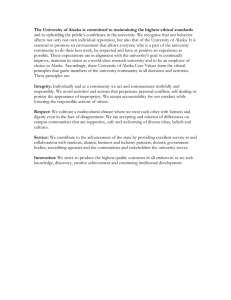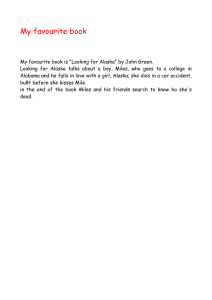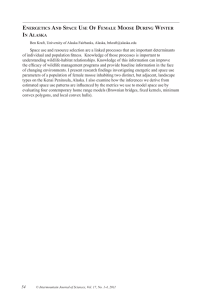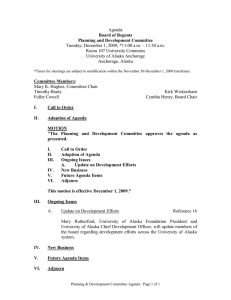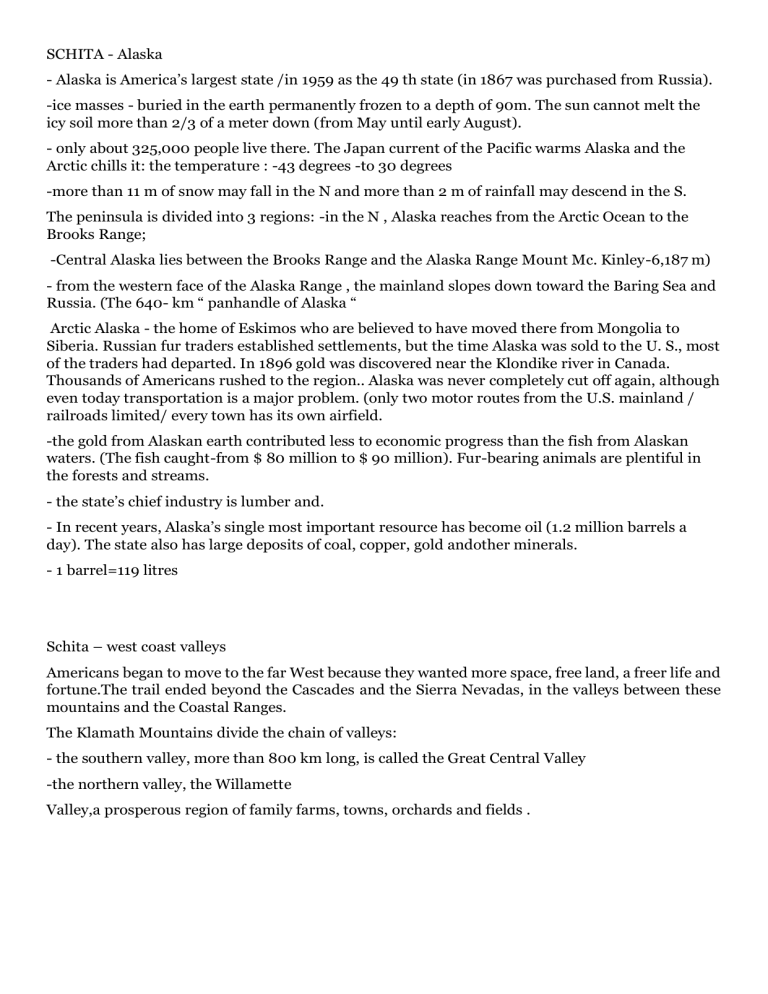
SCHITA - Alaska - Alaska is America’s largest state /in 1959 as the 49 th state (in 1867 was purchased from Russia). -ice masses - buried in the earth permanently frozen to a depth of 90m. The sun cannot melt the icy soil more than 2/3 of a meter down (from May until early August). - only about 325,000 people live there. The Japan current of the Pacific warms Alaska and the Arctic chills it: the temperature : -43 degrees -to 30 degrees -more than 11 m of snow may fall in the N and more than 2 m of rainfall may descend in the S. The peninsula is divided into 3 regions: -in the N , Alaska reaches from the Arctic Ocean to the Brooks Range; -Central Alaska lies between the Brooks Range and the Alaska Range Mount Mc. Kinley-6,187 m) - from the western face of the Alaska Range , the mainland slopes down toward the Baring Sea and Russia. (The 640- km “ panhandle of Alaska “ Arctic Alaska - the home of Eskimos who are believed to have moved there from Mongolia to Siberia. Russian fur traders established settlements, but the time Alaska was sold to the U. S., most of the traders had departed. In 1896 gold was discovered near the Klondike river in Canada. Thousands of Americans rushed to the region.. Alaska was never completely cut off again, although even today transportation is a major problem. (only two motor routes from the U.S. mainland / railroads limited/ every town has its own airfield. -the gold from Alaskan earth contributed less to economic progress than the fish from Alaskan waters. (The fish caught-from $ 80 million to $ 90 million). Fur-bearing animals are plentiful in the forests and streams. - the state’s chief industry is lumber and. - In recent years, Alaska’s single most important resource has become oil (1.2 million barrels a day). The state also has large deposits of coal, copper, gold andother minerals. - 1 barrel=119 litres Schita – west coast valleys Americans began to move to the far West because they wanted more space, free land, a freer life and fortune.The trail ended beyond the Cascades and the Sierra Nevadas, in the valleys between these mountains and the Coastal Ranges. The Klamath Mountains divide the chain of valleys: - the southern valley, more than 800 km long, is called the Great Central Valley -the northern valley, the Willamette Valley,a prosperous region of family farms, towns, orchards and fields .
